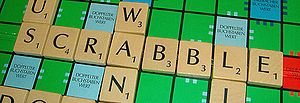
Don’t worry. If you’re expecting this to be another New Year’s admonishment about unhealthy eating, excessive drinking, or lack of exercise, it isn’t. It’s about what not to do if you want to get the best life story interview with your client.
Recently there’s been some discussion among my colleagues at the Association of Personal Historians about the way to record life story interviews. Some personal historians use a digital voice recorder. Others prefer taking notes by hand or typing the interview directly into their laptop.
The latter make it clear they can type as fast as people talk, edit on the fly, maintain eye contact, and save the time and costs of transcribing the interview. For those who take notes by hand, they explain that this helps them keep the story to the essentials.They may record the interview for reference to ensure the accuracy of quotes. All point out that this method of interviewing is what they’re comfortable with and their clients are happy with their work.
But achieving the best interview possible has nothing to do with the time and cost of transcriptions, what process a personal historian is most comfortable with, or editing on the fly. These are all factors that speak to the preferences of the personal historian not the quality of the interview.
5 good reasons to ditch the laptop and handwritten notes.
.
1. An integral and invaluable part of any personal history is recording and preserving the spoken word. Hearing a loved one’s voice is a precious remembrance for bereaved families and future generations. Personal histories involve more than assembling edited transcripts into a story.
2. Laptops and note taking are distracting. I know this from having been interviewed a number of times by journalists. Imagine for a moment that you’re talking to a columnist. You’re pouring your heart out but she’s writing nothing down. Then you move on to something that seems insignificant and the writer starts scribbling furiously. You wonder why these comments elicited such a response. It’s unnerving. It’ll be unnerving for your clients too.
3. Multitasking doesn’t work. There is now sufficient research to show that the mind can’t process more than one thing at a time. People can’t type or take notes and be fully engaged with a client at the same time. Trust me. It can’t be done.
4. Editing decisions are best made after not during an interview. It’s not possible to tell what portions of a narrative need to be dropped until you have a feel for the whole story. An item that seems of little importance at the time of the interview may turn out to be a crucial element in the story.
5. Listening to your interviews improves your skills. There’s tremendous value in recording an interview and being able to play it back. I do it all the time. For one thing, it enables you to see what follow-up questions to ask. But equally important, it gives you an opportunity to assess your strengths and weaknesses as an interviewer.
Conclusion
Not all approaches are equal when it comes to recording personal histories. Choose a good digital recorder and microphone over a laptop or handwritten notes. Your clients will thank you.
If you enjoyed this post, get free updates by email.
Photo by DonkeyHotey
 Most people when they consider a life story project think of a book. There are a lot of good reasons for producing a book. But I’ll be honest. I have a video bias because producing video personal histories is my specialty. I also produce books but video is my passion. To see a sample of my work click here. So why should you consider a video for your or someone else’s personal history? Here are five good reasons…Read more.
Most people when they consider a life story project think of a book. There are a lot of good reasons for producing a book. But I’ll be honest. I have a video bias because producing video personal histories is my specialty. I also produce books but video is my passion. To see a sample of my work click here. So why should you consider a video for your or someone else’s personal history? Here are five good reasons…Read more.













